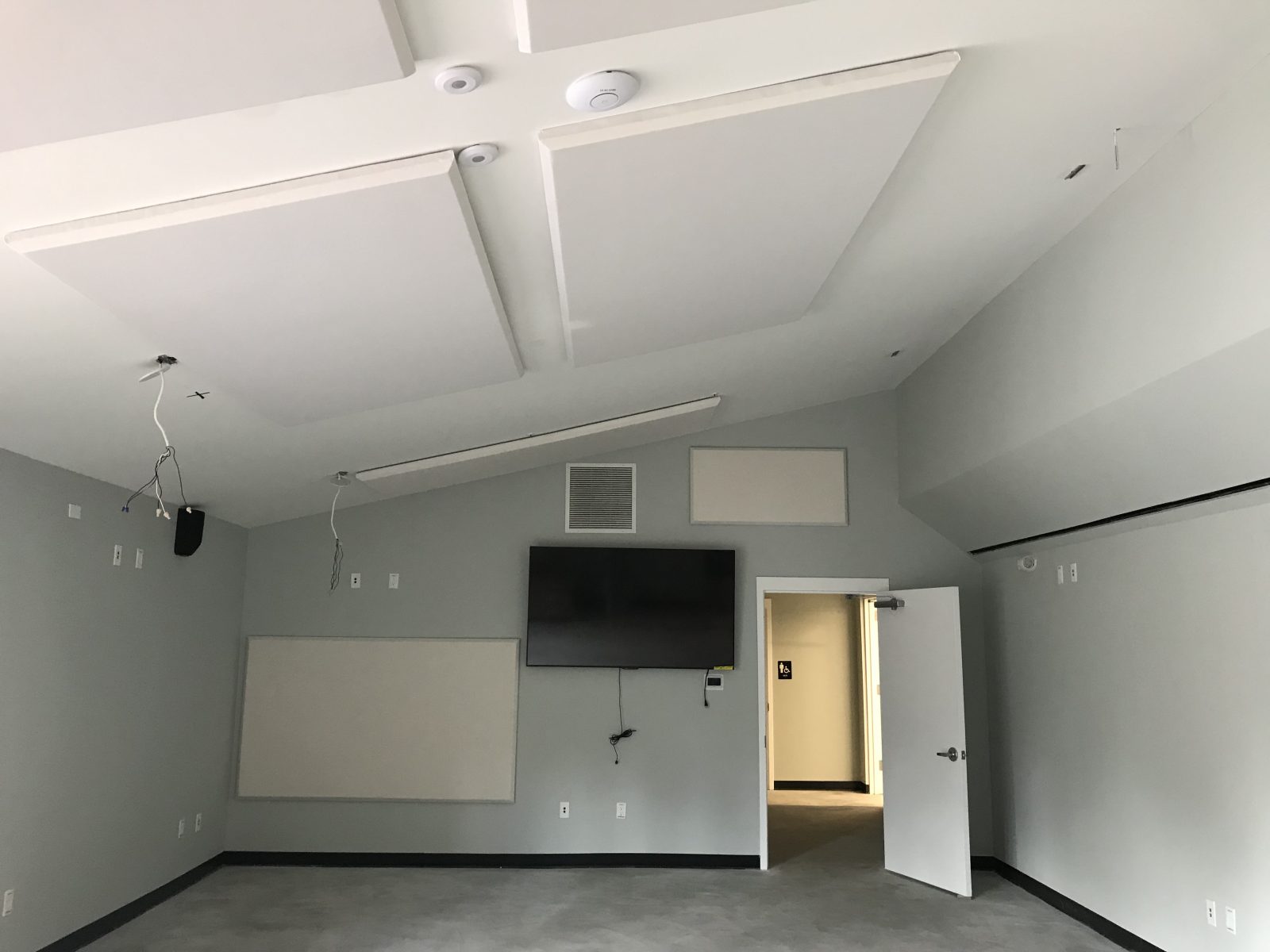The state of Florida Department of Juvenile Justice (FDJJ) reached out to Commercial Acoustics to solve a lingering issue that they have encountered with a number of their properties across the state. In a number of FDJJ detention halls it was determined that the reverberation in the space caused unnecessarily loud environments, which contributed to raised voices and rambunctious behavior. Often times, when one or two residents became unruly the noise level in the space would quickly increase leading to confusion and frustration.
The floors were VCT (vinyl composition tile) and helped to minimize the cost of cleaning and maintenance. Many of the rooms were designed for entertainment, games, and recreation. With metal doors and gypsum ceilings and walls, the larger spaces including corridors and assembly spaces had excessively high RT60 values.
Reinforced Acoustic Panel Installation
In an environment such as this, impact resistant panels hold up best, as they are designed to withstand heavy traffic and possible physical contact. Commercial Acoustics went on site and performed a reverb test and took the measurements of room sizes in order to provide an acoustic design and layout that best met the needs of the client. It was determined that ceiling mounted panels at 10 feet high would keep direct touching of the panels to a minimum, resulting in a longer product lifetime. The ceiling panels were attached to the gypsum board with z clips and locked in place with an extra screw.
Related: Where to Place Acoustic Panels
After the installation, reverberation times decreased by over 50% from 2.5 seconds to less than 1.3 seconds. The resulting space was significantly quieter with a dBA reduction of 4-5 points in addition to the echo reduction.

Fire Rating For Acoustic Panels
At the juvenile justice center, along with other similar occupancy types, fire ratings and fire code compliance are critical to the outcome of the project. While working with the internal project manager, a visit was scheduled with the fire marshal to ensure that the addition of acoustic panels in the interior of the space would not be problematic.
Most commercial sound absorption panels are class A fire rated and also achieve class A rating for smoke development index. These 2 values are determined by the performance on lab tests ASTM E84 (American Society of Testing and Measurements).
The flammability of the product is determined by its 2 primary components – the breathable fabric and the fiber glass or mineral wool core. Both products must achieve a class a rating for the aggregate, finished product to also achieve Class A. In larger spaces where assemblies and gatherings occur, fire treated fabrics may be required.

